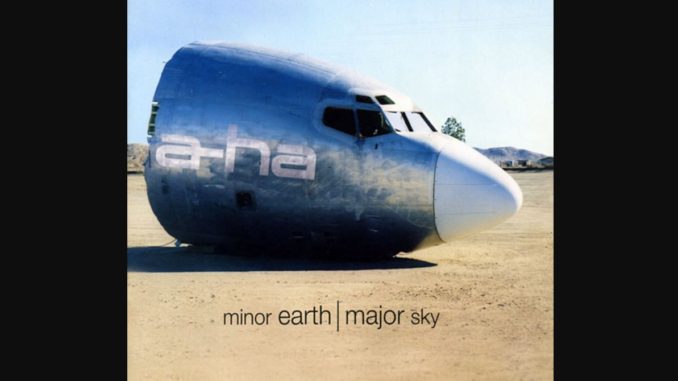
After the Memorial Beach tour wrapped up in 1994, the band went their separate ways for a while. Nobody knew for how long the hiatus would last, or if it was permanent. A break was probably healthy for them at that point, and they all took advantage of it.
Crucially, all of them were involved with music away from each other. Morten Harket released solo albums. Magne Furuholmen worked on film music and with other artists, in addition to throwing himself into his life-long passion for art. Paul Waaktaar-Savoy started from scratch with the Savoy band, touring and releasing albums. They all came back to the band invigorated, and perhaps with new perspectives on what the band was and should be.
These new perspectives would be reflected in the cover art. Until that point, the band members had always been featured on every album cover. Some of them were almost straight portraits, others more stylised and with an artistic set-up and use of colours, but the band had always been in the mix.
Minor Earth Major Sky was released on 14 April 2000, and immediately looked different than before. It was the first album cover that didn’t feature any images of the band.
The cover photo, as well as all the band shots and images featured in the booklet, were taken by Norwegian photographer Bjørn Opsahl.
“I have mostly worked with rock bands” says Bjørn Opsahl in an interview with Fritt Valg. “I started as a rock photographer many years ago, and went from that to authors, actors, and eventually fashion.”
By following that path, he met Magne Furuholmen along the way and was eventually invited to join a-ha in L.A. to shoot them for their “comeback” album. He did, but it was a photo from another session that caught the keyboardist’s eye.
“I was taking more responsibility for the art” says Magne Furuholmen in the liner notes to the 2019 Deluxe Edition of Minor Earth Major Sky. “We had a photo session in L.A. for the cover, and the photographer Bjørn Opsahl had taken pictures of a graveyard for airplanes and showed me the image. It was a shot from another session. I thought, ‘wow, that is a great album cover.’”
The decision to go with that image was championed by Furuholmen, but the others got on board with the image relatively easily. Furuholmen says, “Up until then we had images of the band on the covers, but given the ambiguous relationship we had with our image it was a conscious decision on my part to move away from that, to go with arresting imagery.”


Facebook Comments